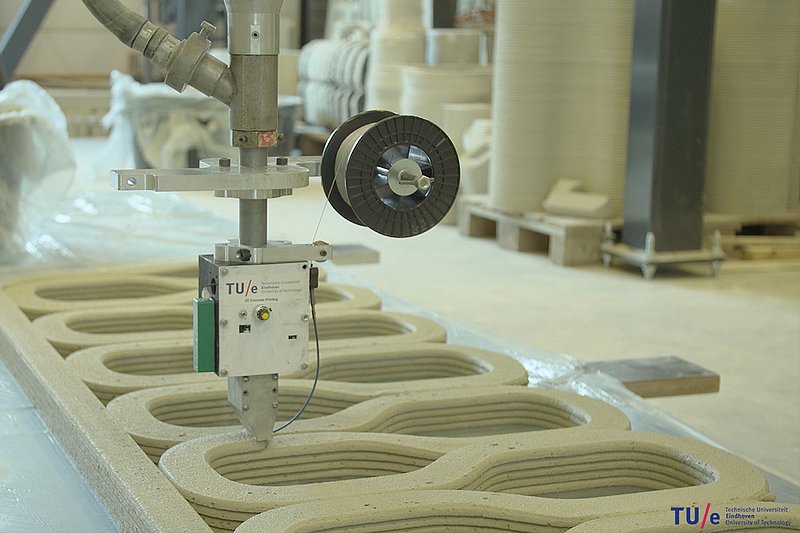25.05.2020
Screw conveyor knowhow enlisted for 3D printing of reinforced concrete
Van Beek, Drunen, the Netherlands – a globally acknowledged leading designer and manufacturer of screw conveyor systems – is contributing its expertise to assist in a research project involving 3D printing of reinforced concrete. The Technical University of Eindhoven (TU/e) has been in the news a lot in recent years with the 3D printing of concrete. Together with the construction industry, the university wants to develop skills to print recyclable concrete products. For example in 2017 it rolled out a new cycle bridge from the revolutionary 3D concrete printer and last summer the longest concrete 3D printed pedestrian bridge (28m) in the world was installed in Nijmegen. In the background Zeeshan Yunus Ahmed, a researcher at the TU/e, is working on the next step: the 3D printing of reinforced concrete. To develop a prototype, Ahmed’s research team opted for a screw conveyor and the expertise of Van Beek.
Concrete is a brittle material that can take a lot of compressive force, but not much tensile force. To prevent cracking, it is therefore important to strengthen concrete with reinforcing bars. This prevents the foundation cracking in the event of an earthquake or subsidence. Currently cement used in 3D printers is often unreinforced and as a result is not suitable for building big or high buildings. “Reinforcement is necessary to hold concrete together, but this is not possible with a concrete printer. This is why we mix special fibres through the cement that give the concrete the deformability needed for a strong building. At the same time the special fibres hold the concrete together, to prevent it from cracking”, explained Ahmed.
A new type of concrete printer is needed for fibre-reinforced concrete. Ahmed started looking for a way to dose the concrete, one of the most important factors of a 3D printer. “It is very important for us to make our knowledge available for industrial innovation. We are therefore pleased to participate in projects of educational institutions,” commented Joram van der Heijden, sales engineer at Van Beek.
The construction sector is reportedly also working on 3D printed houses. However, the large-scale use of 3D concrete printers for the construction sector still seems some way off. Now the prototype of the new 3D concrete printer of the TU/e is as good as ready, it is time for the next step: cooperation with the construction industry. Van Beek’s expertise can play a part in this too. www.van-beek.nl

Prototype 3D concrete printing at TU/e, the Netherlands
« Back
|